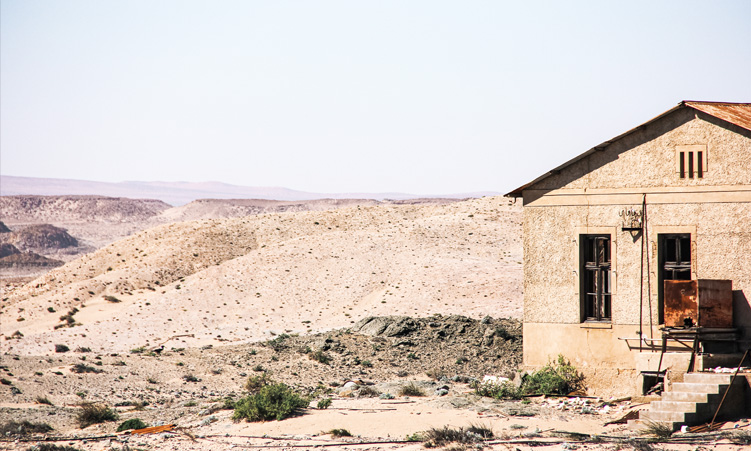The Namibian Chamber of Environment (NCE) says the the planned hydrogen project in southern Namibia, should be stopped until an environmental assessment impact study is done.
In its latest paper focusing on the potential risk of the project in the Tsau //Khaeb National Park (TKNP) area, the chamber says the project poses a severe threat to one of the few global biodiversity hotspots in an arid area.
The area is also one of the largest near-pristine wildernesses on earth.
“With such potential damage to one of Namibia’s most globally important national parks and to our biodiversity, could this hydrogen really be called ‘green’?” NCE chief executive Chris Brown asks.
Furthermore, the NCE reckons a development of this magnitude should not be considered without first conducting a strategic environmental assessment that takes into account the impacts of the Hyphen project and all future projects that will be facilitated by Hyphen’s infrastructure development.
The chamber has also challenged the European Union (EU) and its member states, particularly Germany, to not export the costs of their energy requirements to Namibia.

The NCE wants the EU to take the necessary precautions and due diligence prior to supporting large development projects.
“The hydrogen energy sector is developing rapidly, and new technologies that will reduce production costs for hydrogen threaten the economic viability of Namibia’s future hydrogen exports.
“These risks have not been fully explored,” Brown says.
“The global importance of this national park is greater than all the national parks in Germany, which would be the main recipient of green hydrogen produced in the TKNP.
“The damage to the integrity, biodiversity, landscape, sense of place and future tourism will be immense – all in the interest of serving the relatively short-term energy needs of mainly Germany and some other parts of the EU,” he says.
Brown says Germany would not launch a project with such potential harm to the environment in its own country.
MOVING DAMAGE ELSEWHERE
“We don’t believe the people of Germany would allow the destruction of any of their national parks for energy production, and we ask them to tell their government it is morally wrong to offshore the environmental costs of their energy needs to Namibia,” he says.
The report also argues that the sensitive desert ecosystem is extremely difficult to rehabilitate, while plant translocation has a high failure rate, making strategies to mitigate development actions expensive and largely ineffective.
Subsequently, they reckon that, even with stringent environment management plans in place, the Hyphen Hydrogen Energy project and others to follow will cause irreversible damage to this ecosystem that cannot be offset by protecting biodiversity elsewhere.

LEGAL CONCERNS
The hydrogen developments in the TKNP also raise other long-term concerns about the legislation, policies and processes relating to environmental management in Namibia.
Developments of such nature in the TKNP will set a precedent for developments in other national parks in Namibia.
While current legislation allows for limited controlled mining in national parks and the sustainable use of natural resources for the benefit of the neighbouring communities, these activities are closely managed and their impacts mitigated as much as possible.
“We call on the Namibian government, the German government and the EU to immediately commission an independent and transparent strategic environmental assessment of the green hydrogen sector in Namibia with broad public consultation to plan the most effective way forward for Namibia.
“We also request a meeting with the German minister of environment to explain the importance and significance of the TKNP and the damage which the production of green hydrogen in that sensitive area will do to its biodiversity, its future and the reputations of all who facilitate its development,” Brown says.
Lüderitz mayor Phil Balhao, in response to the NCE’s statement, this week said: “The town of Lüderitz will work closely with the government to oversee the development of a strategic environmental and social assessment (Sesa) for the whole Southern Corridor Development Initiative and Tsau //Khaeb area.
“We believe it is premature to single out any one project’s potential impact before the necessary Sesa impact assessments have been conducted . . . “ he said.
While mining activities are destructive, they are highly localised, and large areas around the mine can be left intact, the NCE says.
By contrast, the proposed hydrogen developments are extensive in nature and will ultimately use most of what is now the TKNP, threatening its integrity as a national park, Brown says.
If a large-scale industrial development is allowed to severely degrade and devalue Namibia’s most biodiverse national park, this precedent puts all other national parks at risk as the TKNP is a global biodiversity treasure chest and one of the largest remaining areas of near-pristine wilderness in the world, the chamber says.
“The extensive industrial development planned for one of the world’s few arid biodiversity hotspots could only produce ‘red’ hydrogen, as it would threaten the persistence of many endemic plant and animal species,” Brown says.
Stay informed with The Namibian – your source for credible journalism. Get in-depth reporting and opinions for
only N$85 a month. Invest in journalism, invest in democracy –
Subscribe Now!






